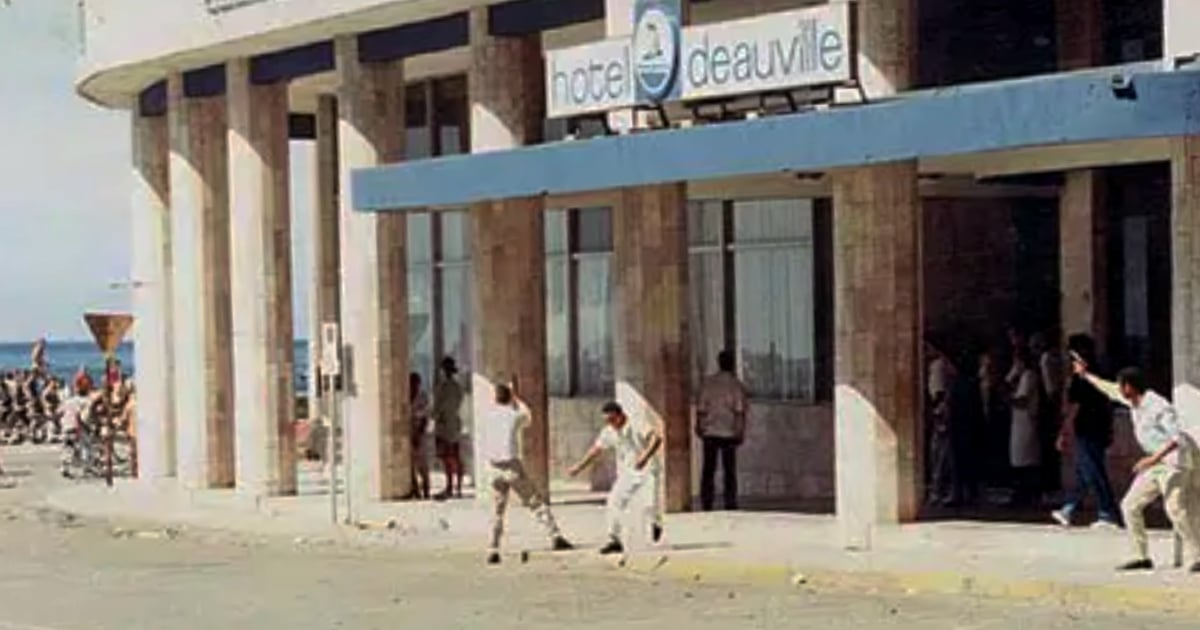It was August 5, 1994, in the midst of the Special Period, and the Cuban regime did not foresee that it would face one of the most challenging days in its bloody history, following the fall of the Berlin Wall. The lack of food, fuel, and transportation had left Cubans skin and bones, wandering like lost souls on Chinese Flying Pigeon bicycles, pedaling until they sweated off the vitamins given by the regime to stave off hunger and the rise of polyneuritis.
Power outages, days without water, heat, and nearly a decade of hearing the phrase “now we are going to build socialism” while watching the country fall apart, the rise of international tourism which highlighted discrimination, and the emergence of the first leaders of a loud “continuity” of slogans, all contributed to heating the pot.
The deliberate and criminal sinking of the tugboat "13 de Marzo" on July 13 of that year, ordered by some cowardly powerful figure who will never be held accountable, resulted in 41 deaths, including 10 children. But it left something more: the feeling that there was little left to lose in a country that had lost its aura of “justice” and was showing the true face of its rulers: fanatics disconnected from reality and willing to cause a bloodbath to stay in power.
The pot exploded, and the people called that singular episode of protest El Maleconazo. The regime's propaganda tried to depict it as an outbreak of vandals and worms, quelled by the mere presence of dictator Fidel Castro, who arrived “without escorts, surrounded by the people” to restore order and peace and reclaim “the streets for the revolutionaries.”
There were no smartphones or social media, but Dutch photographer Karel Poort captured the disturbances with his lens. He didn’t capture even a fraction of what happened that day: people running along the Malecón cheering on those who had hijacked the Lanchita de Regla to go to the United States, the landing of the Rapid Response Brigades disguised as workers from the Blas Roca contingent, the rebar, the broken heads, the blood, the screams, the terror.
But the visitor and his camera did capture something. Despite the regime's attempt to sell the repression by plainclothes officers as a “victory of the people,” Poort pressed his shutter and got the proof of the big lie: plainclothes repressors near the Deauville Hotel, firing their pistols into the air to disperse the protesters.
After that, after much beating, rebar strikes, and trucks full of detainees, the Great Demagogue appeared with five security rings to perform the role of alpha male that the revolutionary flock so loved.
Now it is said that with the historic protests of July 11, 2021 (11J), “fear shifted sides.” But the truth is that the fear of the revolutionary tough guys dates back to that August 5, when for the first time they heard the roar of the emaciated people who were beginning to become aware of the oppression of the totalitarian regime built by a dictator clinging to power and trembling at the “dismantling” of the socialist bloc.
Key Questions About El Maleconazo and Cuban Protests
Here are some important questions and answers about the events of El Maleconazo and the broader context of Cuban protests against the regime.
What triggered El Maleconazo in 1994?
El Maleconazo was triggered by extreme shortages of food, fuel, and transportation during the Special Period, along with widespread disillusionment with the Cuban regime.
How did the Cuban regime respond to El Maleconazo?
The Cuban regime responded with brutal repression, deploying plainclothes officers and the Rapid Response Brigades to violently disperse the protesters.
What was the significance of Karel Poort's photographs?
Karel Poort's photographs provided crucial evidence of the regime's lies, capturing plainclothes officers repressing protesters despite the regime's claims of a peaceful resolution.
What impact did El Maleconazo have on future Cuban protests?
El Maleconazo set a precedent for future protests in Cuba, showing the regime's vulnerability and inspiring later demonstrations, including the historic protests of July 11, 2021.
